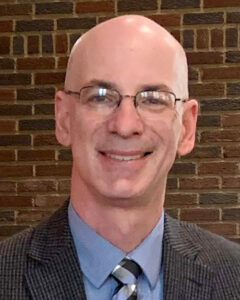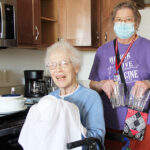By David Pitt
The story of the two disciples on the road to Emmaus in the Gospel according to Luke seems to clearly show the centrality of the Mass for the life of the Church. Importantly, Luke wants to emphasize how the liturgical pattern itself makes it possible for the disciples to come to recognize Jesus. After all, for most of the story, Jesus is a stranger to the disciples (Luke 24:16).

The disciples’ hearts burned within them as the unrecognized Jesus explained Scripture to them (Luke 24:31). Their eyes were opened as the unrecognized Jesus broke bread (Luke 24:31). But their awareness of his presence is instantaneous. For as soon as the disciples recognized him, he vanished from their sight (Luke 24:31)! Their awareness of his presence enabled them to reread their experience more faithfully. It was not a stranger who explained the Scriptures. It was not a stranger who broke the bread. It was Jesus himself! Our familiar liturgical pattern is very much at work in the Emmaus story. Then, as now at Mass, the word leads to the Eucharist. We know that his presence is most real — in the Scriptures that are proclaimed, in the consecrated bread and wine, in the presiding minister and in the praying and singing assembly — even if it operates beyond what is apparent to our senses. When the Church celebrates the Eucharist, Christ is very much in our midst.
The liturgical pattern of Scripture and broken bread has continued throughout the Church’s history. Writing in the first century, St. Justin, a martyr, described how his community would read from the writings of the prophets and the apostles for as long as time allowed and then proceed to the blessing of bread and wine. “We call this food eucharist [thanksgiving];” he wrote, “and only those who have been convinced of the truth of our teaching and have been [baptized] may share in it” (First Apology, 66.1). Of course, anyone could read together and eat together. But sharing in this instruction and in this food was reserved exclusively for the Church. In part, this is because of the fact that Christians saw Christ being present among them in these actions that Jesus instituted. It also had much to do with the way the Eucharist itself was shared. Then, as now, eating a common loaf and drinking from a common cup implied a certain degree of closeness. Even before the impact of COVID-19, with whom might we tear off and share a piece of bread? To whom would we give a drink from our own cup? Yet this was precisely the intimate model of communal love practiced by Christians. Yes, the baptized were bound together with Christ; they were simultaneously bound together with each other.
The unity ritually proclaimed in the early Church is the same kind of unity intended in our own celebrations of the Eucharist. The second verse of the Holy Thursday hymn “Ubi Caritas,” establishes the expectation well:
So when we as one are gathered all together,
Let us strive to keep our minds free of division;
May there be an end to malice, strife and quarrels,
And let Christ our God be dwelling here among us (Roman Missal).
 I particularly appreciate the realistic hope expressed here. We must strive to keep our minds free from the divisions that exist. We pray that malice, strife and quarrels may be ended. We petition that Christ might truly dwell among us. Christ’s presence within the Church, within the liturgical assembly, is not magically accomplished; rather, it seems to require some degree of co-operation.
I particularly appreciate the realistic hope expressed here. We must strive to keep our minds free from the divisions that exist. We pray that malice, strife and quarrels may be ended. We petition that Christ might truly dwell among us. Christ’s presence within the Church, within the liturgical assembly, is not magically accomplished; rather, it seems to require some degree of co-operation.
Here, I think, it is helpful to return to the disciples on the road to Emmaus. Yes, they did come to recognize Jesus in the breaking of the bread. But they first needed to invite Jesus to stay with them (Luke 24:29). This invitation, I suspect, was not the easiest offer. They knew that Jesus, their teacher, their friend, the one that they hoped would redeem Israel (Luke 24:21), had just been crucified. This seeming stranger challenged what they knew about Jesus. Essentially, the stranger challenged their very discipleship and friendship. If in similar circumstances, my own response would not have been theirs: “Stay for dinner!” These disciples might not have understood Jesus’ theology, but they certainly understood his established table practice, which opens the possibility for their encounter with Jesus. This gives me hope. For despite our own many misperceptions, our occasions for division and our capacity for malice, strife and quarrels, the Church’s Eucharist offers an opportunity to be unified with Christ. As such, it offers us an opportunity to be unified with all those others who, in their own brokenness, seek unity with Christ. Lord, we are not worthy that you should enter under our roof, but only say the word….
(David Pitt, Ph.D., is associate professor of Theology at Loras College in Dubuque, Iowa.)











